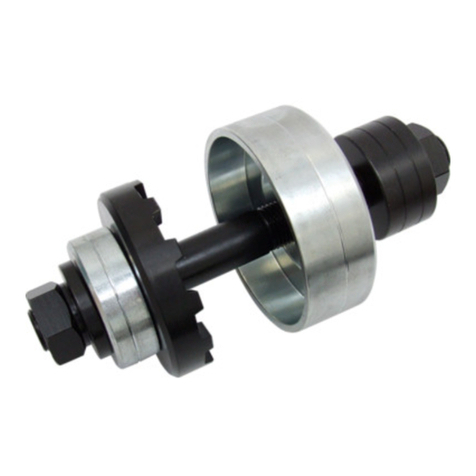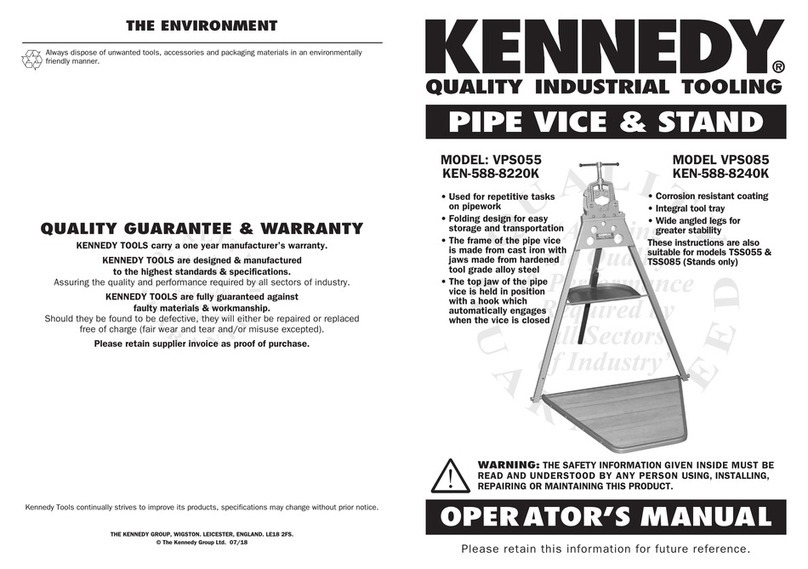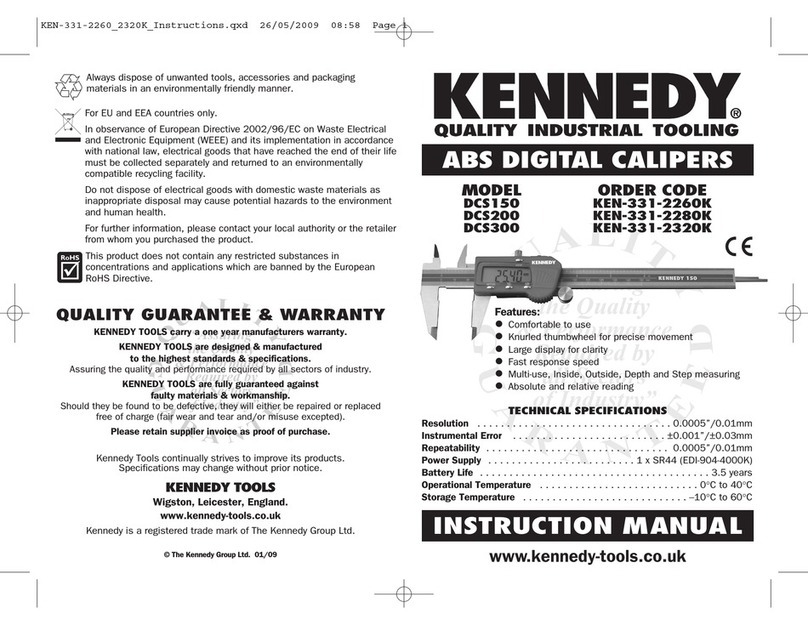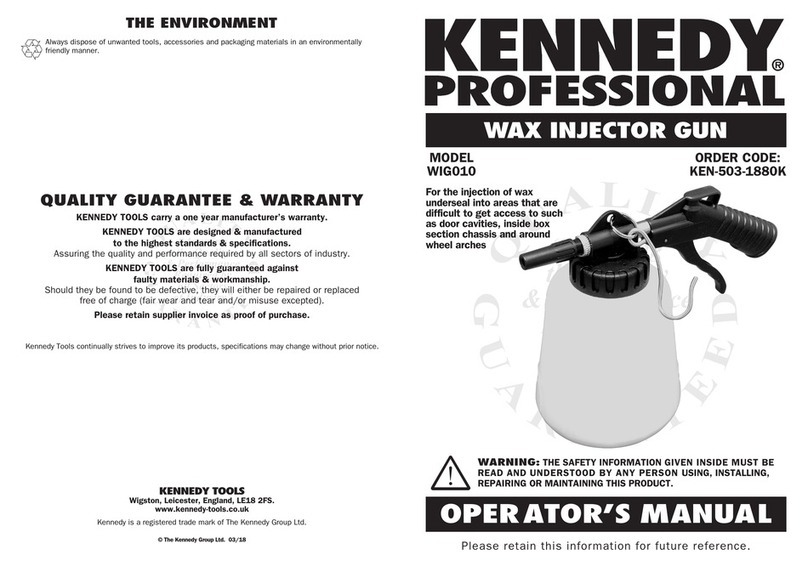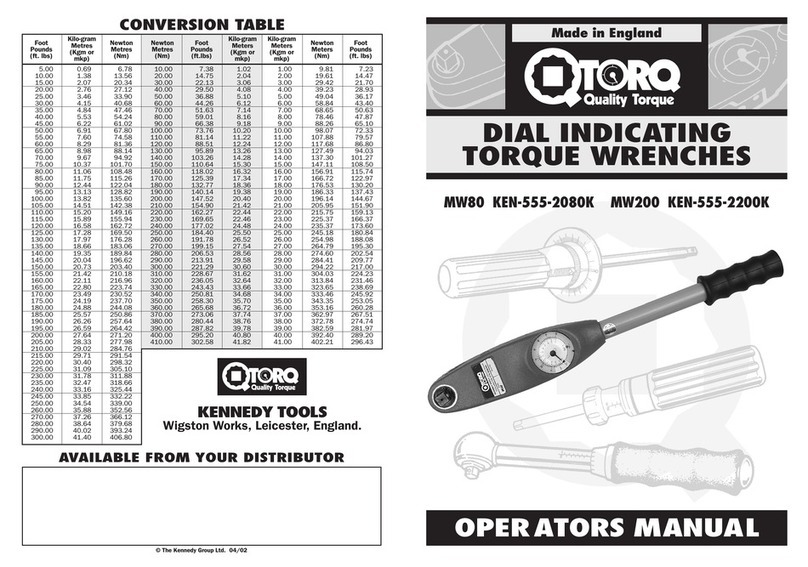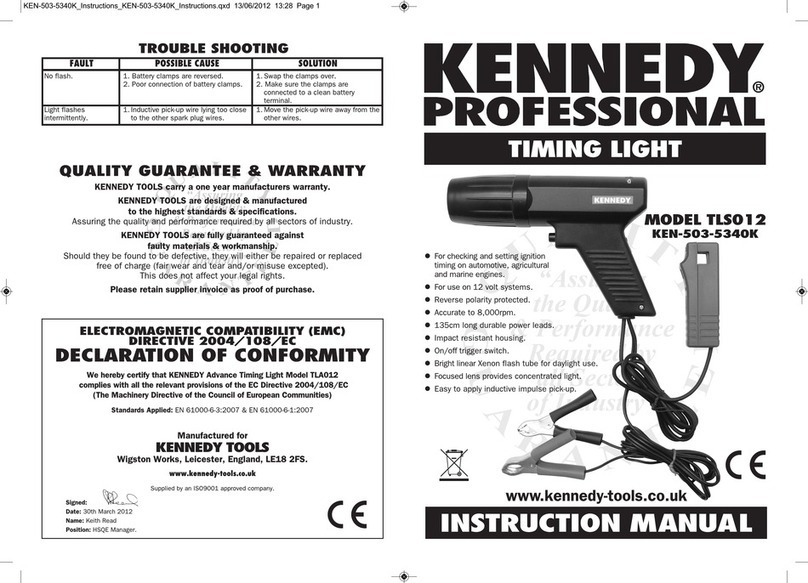2 3
KENNED
thoroughly recommends reading these instructions before using the
iming Light, even if you have used one before. Reading these instructions carefully
and understanding them fully will enable you to perform tasks correctly and will
prevent injury to yourself or someone else as well as prevent damage to the vehicle
and equipment. For detailed and concise instructions on using this product correctly,
refer to the manufacturer’s workshop manual or the appropriate Haynes service and
repair manual.
SAFET GUIDELINES
lIf any doubt, contact a qualified auto electrician.
lAlways wear safety goggles to protect your eyes from battery acid, petrol, dust
and dirt flying off moving engine parts.
lAlways wear protective gloves when working with engine components.
lAlways ensure that hands, hair, clothing or cables are well clear of any moving or
hot parts.
lAlways follow the vehicle manufacturer’s recommendation and procedures.
lAlways turn off the ignition of the vehicle before connecting the clamps to the
battery and disconnecting the timing light.
lAlways ensure that the hand brake is on and the vehicle transmission is in Neutral
(manual) or Park (automatic).
lAlways keep children and unauthorised persons away from the working area.
lAlways store the timing light in a safe, dry and child proof location when not in use.
lAlways run the engine in a well ventilated area.
lAlways remember that a flashing timing light “freezes” rotating components. Do not
be tempted to touch an apparently stationary component which is, in fact, rotating.
lNever use the timing lights if they are damaged in any way.
lNever smoke, create sparks or use a naked flame near batteries.
lNever rest tools or metallic items on top of the battery.
lNever touch any ignition components when the ignition is on as very high voltages
are present.
lNever pull the cables or clamps from the battery terminals.
lNever operate in the vicinity of flammable liquids or gases.
lNever place the timing light on the hot engine surface.
lNever modify the timing light in any way or use it for a task for which it is not
designed.
Timing is given in “linear measurement”
or “degrees” relative to the “Top Dead Centre” (TDC), of
the movement of the piston (see figure 1).
B. .D.C Before Top Dead Centre. When the timing is
“advanced”, the spark will occur before the piston
reaches the top of the engine cylinder ensuring that the
full power of the explosion is obtained.
.D.C Top Dead Centre. The piston is at its highest point
in the cylinder.
A. .D.C After Top Dead Centre. When the timing is
“retarded”, the spark occurs after the piston has started
to go down in the cylinder.
LEAD CONNEC IONS (see fig.2)
1. Clamp the inductive pick-up around the number one (1)
spark plug wire. Make sure the arrow on it is facing towards
the spark plug. Do not allow the inductive pick-up to touch
the exhaust manifold or surrounding parts as these areas
become extremely hot and will damage the inductive pick-up.
2. Connect the RED clamp to the positive (+) battery
terminal.
3. Connect the BLACK clamp to a secure engine ground
such as the alternator bracket or the engine block. For safety
reasons, do not use the negative (-) battery terminal or fuel
system components as a ground connection point.
N.B. When the trigger is pressed the check light should come
on if the timing light is connected properly.
S ANDARD IMING ADJUS MEN
PLEASE NO E: Before adjusting the timing, the “dwell
angle” or “gap” should be adjusted on vehicles
fitted with contact breaker points.
1. Check manufacturers specifications for correct timing for engine being serviced.
2. Loosen the distributor clamp bolt so that the distributor can be rotated in either direction.
3. Locate engine timing mark and use a rag to clean all grease and dirt from the mark and the pointer. It
may help to use chalk or white paint on the mark to make it more easily seen.
4. Start and run the engine until normal operating temperature is reached. Approximately 15 minutes and
then stop engine.
5. Start the engine and operate at normal idle speed, aiming the timing light towards the timing mark.
6. Set the advance dial to zero if you require to use the manufacturers timing marks on the pulley.
7. Trigger the timing light and observe the reading from the timing mark.
8. Compare the reading obtained with the manufacturers specifications. If the timing is not as specified, slowly
rotate the distributor slightly to obtain a correct reading.
9. Stop the engine.
10. Tighten the distributor clamp bolt.
11. Restart and check the timing.
12. If it is the correct reading, stop the engine and reconnect the vacuum hose.
INTRODUCTION
OPERATING INSTRUCTIONS
“Timing” is the precise moment a spark plug ignites an air and fuel mixture which results
in an explosion delivering maximum power to the engine piston. B. .D.C
Before top dead centre
.D.C
Top dead centre
A. .D.C
After top dead centre
PIST N
PULLEY
TIMING MARKS
T.D.C T.D.C T.D.C
P INTER
Fig. 1
Fig. 2
+
Engine
block or
chassis
Distributor
Battery
Black
Red
No.1
Spark plug
Inductive
pick-up
Inductive
pick-up
Advance dial
Trigger
Check light Clamps
_
ADVANCE IMING ADJUS MEN
The timing light is fitted with an advance dial. The dial allows you to put the degree of timing required
according to the manufacturers specifications into the timing light. This means you only have to find the
TDC timing mark on the engine pulley. It also allows the checking of advance timing when raising engine
revs. The dial can be turned until the mark on the belt aligns with the TDC mark on the engine pulley and
the dial setting gives you the timing degrees.
